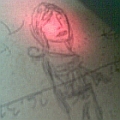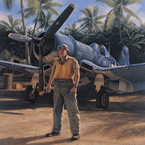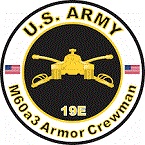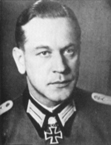rsallen64
Posts: 172
Joined: 6/15/2009
From: Olympia, WA
Status: offline

|
The M60A3 did have a "supposed" pressurized NBC system with integrated gas mask hoses as RangerJoe states. Not as good as on the later M1. You hooked the mask you carried, which was different from the standard infantry mask, to the hose linked to the system. There was a nob that controlled the air flow, both amount of flow and temperature. In winter, you could blow warm air, and in summer, supposedly cool air. I say supposedly because it was never very cool and didn't make much of a difference when the inside of the tank was 120 degrees or more, but if you weren't in NBC training or full-on MOPP gear, you did indeed stick the hose down your shirt for some cooling effect.
BTW, tanks typically do not go into combat with their "doors" open. Hatches would be closed in combat. Open hatches invite shells, shrapnel, chemicals, gas, you name it. Blowers on to suck out cordite, buttoned up for combat, unbuttoned for traveling, that's SOP. The bottom line is that it can be warm and somewhat comfy in the winter because you do have heat in a tank, but the summer is pure hell.
_____________________________
Desert War 1940-1942 Beta Tester
Agressors: Ancient Rome Beta Tester
"The greatest and noblest pleasure which men can have in this world is to discover new truths; and the next is to shake off old prejudices." Frederick the Great
|
 Printable Version
Printable Version




















 New Messages
New Messages No New Messages
No New Messages Hot Topic w/ New Messages
Hot Topic w/ New Messages Hot Topic w/o New Messages
Hot Topic w/o New Messages Locked w/ New Messages
Locked w/ New Messages Locked w/o New Messages
Locked w/o New Messages Post New Thread
Post New Thread